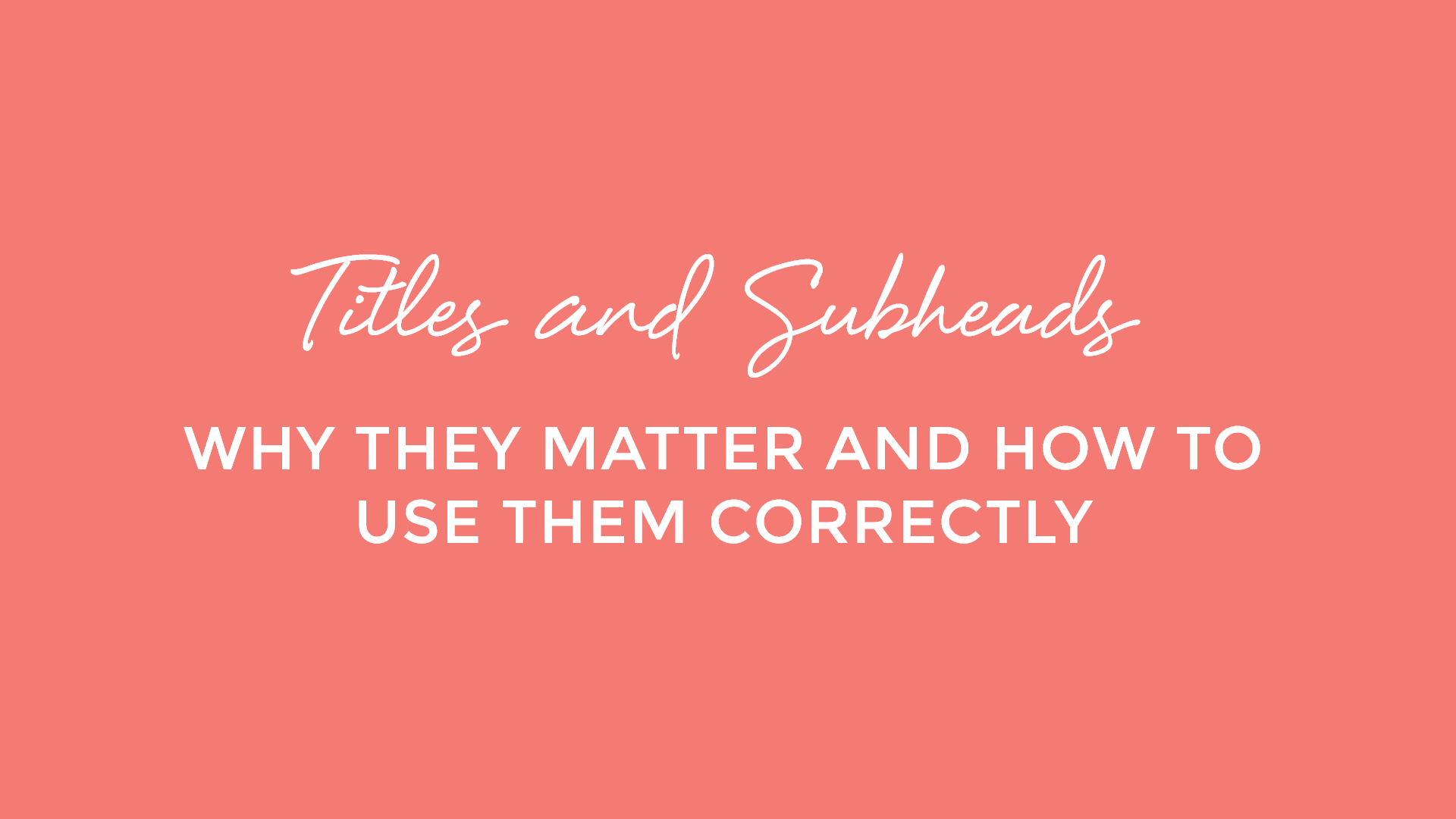Your business blog posts are great at adding value for your site visitor, and they are essential to your website’s SEO. That SEO is based on several factors including the blog structure, which is why your titles and subheadings are crucial parts of your blog. Not to mention being attention grabbers for your readers. We’ve got the breakdown of how to create and use titles and headers that will draw in your readers and increase your SEO advantage.
Don’t Get Cut Short
Titles
The ideal length for the title of a blog is 60-70 characters. After 70, it’s likely to be cut off in the search engine returned results. While this probably isn’t the end of the world in most cases, if your title reads much differently when a few words are cut off, searchers may be confused and possibly even offended by the part that is displayed!
Subheadings
Subheadings are all the headings within your content (“Don’t Get Cut Short” for example). They are important for a few reasons. First, they allow a reader to quickly scan your post. If they can’t get enough information in a few seconds to make a decision about whether or not they want to read the post, they’ll likely skip it and move on. Second, subheadings should pique a reader’s interest. Keeping a subheading snappy and interesting is key.
Keywords and Numbers and Brackets, Oh My
Titles
Using numbers is a great way to grab attention to your post. Think “3 Ways a Great Title Can Make a Big Difference.” In addition, always making sure that your keywords are part of the title is vital for good SEO – this will also ensure that your title isn’t vague or misleading. Lastly, consider using brackets in order to clarify and add details to the title (such as “Blog Titles Really Are That Important [new statistics]”).
Subheadings
The post subheadings are also a great place to put your keywords for the post. If you’re using a number in your title, be sure that your subheadings are following the same format so readers are not confused.
Formatting Matters
Title
In the Hammersmith Support post “How to Structure Your Blog for the Best SEO,” we talked about how formatting your blog boosts your SEO. For titles, WordPress will automatically make your title an H1 tag. But if you have to do so manually, be sure that only your title has the H1 tag. It will make it easier for readers, as well as search engines, to understand.
Subheadings
This post is a good example of formatting that employs several subheadings. You’ll notice that our main subheadings are formatted as H2, and the additional subheadings are H3. That is not only visually pleasing for readers but also helps search engines more readily crawl and rank the content.
Want More?
Click over to our blog to read more about blogging, website maintenance, and women in tech.
We’re here to help! If you have questions about your website or the design process, we’d love to talk with you. Book a free 30-minute consultation.

